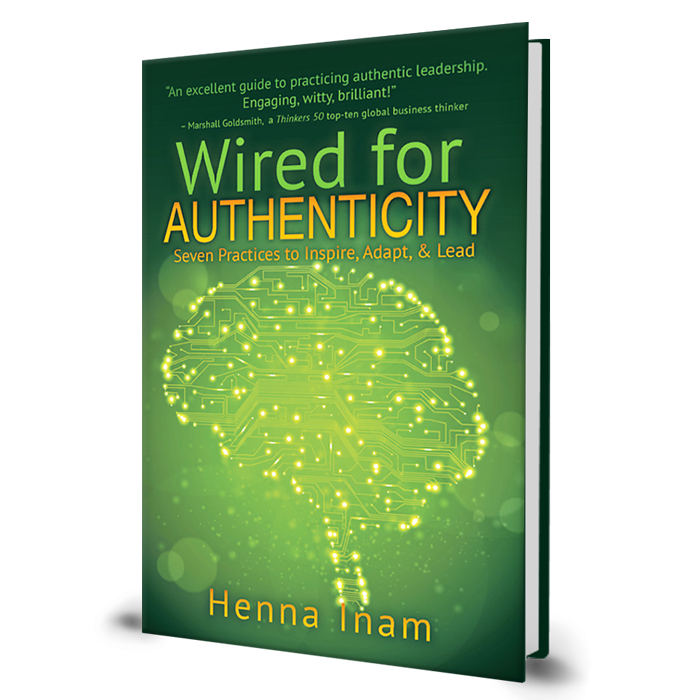By Henna Inam
It is one of those words that gets thrown around in business a lot these days. So much so that I often wonder if anyone stops to think about what it really means.
That was my prevalent thought and question as I began reading the new book from Henna Inam. I wanted the book to cast new and useful light on this overused word, and I was a bit skeptical as to whether it would or not.
As I write to you now, I can say that it does helpfully add to the conversation, clarifies some things, and most importantly, provides a tangible plan to build your authenticity and become more real for yourself and as a leader.
In the introduction the author asks four questions . . .
What if . . .
. . . authenticity enabled us to both be ourselves and adapt to be effective leaders?
. . . authenticity actually helped us succeed in high-demand, high-change environments?
. . . authenticity was actually good for the health and well-being of each human being
. . . authenticity was a way to get the best results?
I was hooked with the first question alone, because that is the balance – be myself, but be willing to change – that I find many people have trouble with.
The book helps answer those questions through what the author calls “the seven practices of authenticity” which are:
- Befriend your body
- Stay curious
- Let go
- Give yourself an A
- Choose be before do
- Face the dragon
- Dance with the dream
The book provides explanation of each practice and gives concrete next steps as well. The last section of the book puts authenticity in a broader context of work, leadership and organizational life.
As I have said, the book is helpful and provides tangible actions for us to become more of our true self and lead from that place effectively. The style may not suit everyone – if you are a very data-driven, bottom-line, logical person, the more metaphysical tone might not be in your comfort zone. I share that not to steer you away, but to make you aware. I can foresee some people reading a few pages and putting it down. If that would be your reaction, I would encourage you to read on anyway.
Along with the book, I recommend the free assessment that accompanies the book – which can be found here. You could use the assessment to better understand yourself and even help you decide if you feel the book is best for you. Either way, the assessment is worth the five minute investment.


0 comments